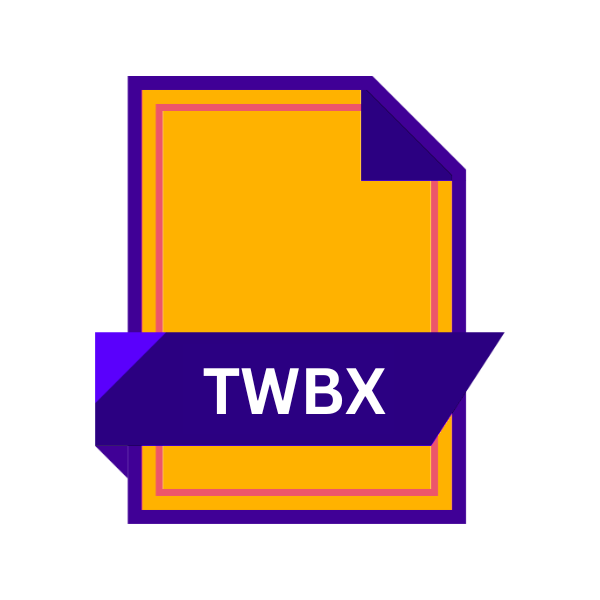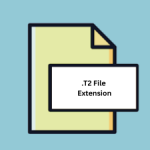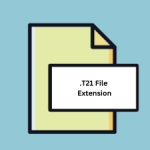.TWBX File Extension

Tableau Packaged Workbook
| Developer | Tableau Software |
| Popularity | |
| Category | Data Files |
| Format | .TWBX |
| Cross Platform | Update Soon |
What is an TWBX file?
In the realm of data visualization and analytics, the .TWBX file extension holds significant weight, serving as a vessel for Tableau Packaged Workbooks.
These files encapsulate not only the data visualizations but also the underlying data sources, providing a comprehensive snapshot of insights, analyses, and presentations.
Understanding the intricacies of .TWBX files are crucial for Tableau users and data enthusiasts alike, as it enable efficient sharing, collaboration, and exploration of visualized data.
More Information.
Introduced alongside Tableau Desktop, the .TWBX file extension emerged as a solution to address the challenges associated with sharing Tableau workbooks.
Before its inception, sharing Tableau workbooks often necessitated careful management of data connections and sources, leading to potential discrepancies and compatibility issues.
By packaging the workbook along with its data sources, Tableau aimed to streamline the sharing process while ensuring data integrity and consistency across different environments.
Origin Of This File.
The genesis of the .TWBX file extension traces back to the innovative minds behind Tableau Software, a leading analytics platform renowned for its intuitive data visualization capabilities.
Tableau Packaged Workbooks were introduced as a means to consolidate data sources, visualizations, and associated elements into a single, portable file format, facilitating seamless sharing and presentation of insights.
File Structure Technical Specification.
At its core, a . TWBX file is essentially a compressed archive that encompasses multiple components essential for recreating the Tableau workbook. These components typically include:
- Workbook (.TWB): The primary Tableau workbook containing visualization definitions, layout configurations, and interactivity settings.
- Data Source(s): The underlying data sources, which may include Excel files, databases, or cloud-based data repositories.
- Extracts: Extracts of data used in the workbook for offline analysis and visualization.
- Images & Other Resources: Any images, custom shapes, or additional resources embedded within the workbook.
- XML Metadata: Metadata files providing instructions and configurations for rendering the workbook.
How to Convert the File?
Converting a .TWBX file may be necessary for various reasons, such as extracting specific components for analysis or sharing data with individuals who don’t have access to Tableau software. Here’s a guide on how to convert .TWBX files:
1. Using Tableau Desktop:
- Open the .TWBX File: Launch Tableau Desktop and either drag the .TWBX file into the application or use the “File” menu to navigate to and open the file directly.
- Save as TWB or Data Source: Once the .TWBX file is open, you have the option to save it as a Tableau Workbook (.TWB) or as individual data sources. Go to the “File” menu, select “Save As,” and choose the desired format (TWB or data source).
2. Using Tableau Reader:
- Install Tableau Reader: Download and install Tableau Reader, a free application provided by Tableau, designed for viewing and interacting with Tableau visualizations.
- Open the .TWBX File: Launch Tableau Reader and open the .TWBX file by selecting it from the application’s interface or by using the “File” menu to navigate to the file location.
- Export Data: While Tableau Reader doesn’t offer direct conversion options, you can interact with the visualization and export data to other formats like CSV or Excel for further analysis.
3. Using Third-Party Tools:
- File Compression Software: Since .TWBX files are essentially ZIP archives, you can use file compression software like WinZip or 7-Zip to extract their contents. Once extracted, you can work with individual components as needed.
- XML Editors: .TWBX files contain XML metadata files that define workbook configurations. Advanced users can use XML editors to parse and manipulate these files, although caution is advised to avoid unintended changes.
Advantages And Disadvantages.
Advantage:
- Portability: .TWBX files encapsulate all necessary components, enabling seamless sharing and collaboration without worrying about missing data sources or dependencies.
- Data Integrity: By packaging data sources along with the workbook, .TWBX files ensure data integrity and consistency, regardless of the recipient’s environment.
- Ease of Sharing: Sharing .TWBX files are straightforward, whether via email, cloud storage, or Tableau Server, facilitating efficient dissemination of insights and analyses.
Disadvantage:
- File Size: Due to the inclusion of data extracts and resources, .TWBX files can be larger compared to standalone Tableau workbooks (.TWB), potentially posing challenges for storage and transfer.
- Limited Editability: While .TWBX files can be opened and viewed in Tableau Desktop, editing capabilities are restricted unless the file is unpackaged into its components.
- Compatibility Issues: Despite efforts to ensure cross-platform compatibility, certain features or functionalities within .TWBX files may not translate seamlessly across different versions of Tableau or operating systems.
How to Open TWBX?
Open In Windows
Double-click the .TWBX file to open it in Tableau Desktop. Alternatively, use file compression software like WinZip or 7-Zip to extract its contents for further editing or analysis.
Open In Linux
Install Tableau Reader and open the .TWBX file. Alternatively, use command-line tools like ‘unzip’ to extract its contents for viewing or manipulation.
Open In MAC
Double-click the .TWBX file to open it in Tableau Desktop on macOS. Alternatively, use Terminal and command-line tools to unzip and access its contents.
Open In Android
Install Tableau Mobile from Google Play Store and open the .TWBX file within the app to view its contents and interact with visualizations.
Open In IOS
Install Tableau Mobile from the App Store, then open the .TWBX file within the app to explore its contents and interact with visualizations on your iOS device.
Open in Others
Utilize third-party tools offering .TWBX compatibility for viewing, extracting, or converting its contents. Explore options tailored to specific needs and platforms, ensuring seamless access and utilization of Tableau Packaged Workbooks.













